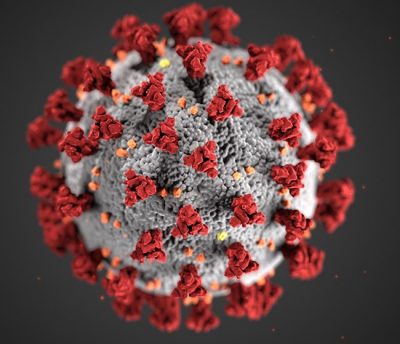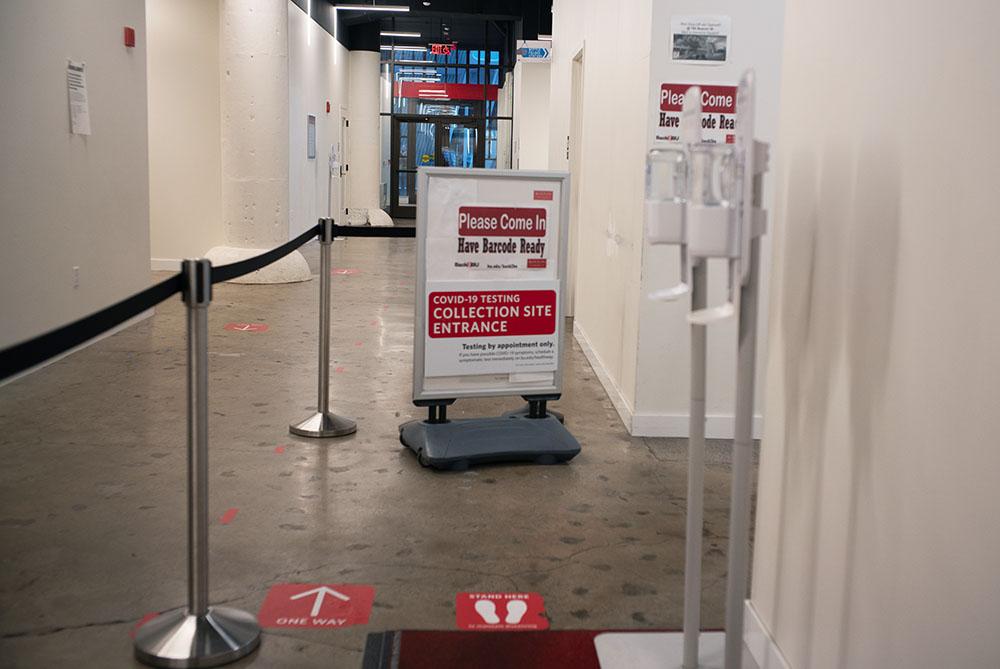Scratchy throat, itchy nose and relentless cough? In the age of COVID-19 with over 180,000 cases worldwide — over 4,600 of those in the United States and nearly 200 in Massachusetts — it’s hard not to feel anxious about suspicious symptoms that resemble a flu or a cold.

The World Health Organization stated that the coronavirus family is known to cause anything from the common cold to more severe respiratory diseases, such as the Middle East Respiratory Syndrome and the Severe Acute Respiratory Syndrome. The coronavirus was first discovered in chickens in 1937 and researched in greater detail in humans in 1965, according to several science journals.
The novel coronavirus, also known as COVID-19, is considered genetically similar to SARS and has been designated by health officials as SARS-CoV-2.
The surface of the virus is dotted with spike proteins, where under an electron microscope, appears like a radiating sun or a corona, meaning “crown” in Latin. These proteins interact with the host cell, coaxing the membrane open and allowing the virus to easily slip in.
Bats and other mammals are common hosts of the virus. Experts believe the coronavirus spread from bats to pangolins, a type of anteater consumed in parts of China, according to The New York Times.
When the disease transferred from animal to human in late 2019, the outbreak progressed quickly through human-to-human contact. Like influenza, respiratory droplets containing coronavirus are thought to be the mode of transmission. Whether through coughing, sneezing, or talking, virus-laden droplets can drift through the air up to six feet in distance.
One study from the National Institutes of Health found if the droplets of an infected person land on virus-friendly surfaces, such as plastic or stainless steel, it has the potential to survive for up to 72 hours. Even on cardboard, coronavirus could last up to 24 hours.
The incubation period — the time between exposure and appearance of first symptoms — for someone exposed to COVID-19 can take up to 14 days, although the Centers for Disease Control and Prevention have stated that symptoms can start as early as two days after exposure.
Signs of infection run along a spectrum, with fever, shortness of breath, fatigue and dry cough as common, but not universal symptoms. These common symptoms have formed the basis for getting tested — and aside from recent travel or other known exposure — and for self-quarantine.
However, it is in carriers who have yet to reveal symptoms where the danger for community spread lies. Such is the case of the large coronavirus outbreak in Massachusetts, which has been linked to a Biogen conference held in Boston last month.
Experts are not yet certain how much coronavirus transmission is spread by the visibly sick versus mildly sick or those who appear well. Thus, the CDC has recommended COVID-19-afflicted communities to practice social distancing, refraining from unnecessary physical contact or large gatherings, in an effort to hinder further transmission.
While the rising number of confirmed cases and rising death toll can appear frightening, most cases of COVID-19 are mild, and recovery involves isolation and bed rest at home. The elderly and the immunocompromised are most likely to succumb to severe symptoms and require hospitalization.
Children under the age of 10 appear to be spared from the worst of the current coronavirus, according to a research published in JAMA Network. Researchers are still unsure why, but believe the still-developing immune systems are key.
There is no approved treatment management, but many clinical trials are currently testing the possibility of different antiviral drugs.
Late last month, Cambridge-based Moderna Inc. shipped its messenger RNA-based vaccine to the NIH’s National Institute of Allergy and Infectious Diseases for testing. Messenger RNA, or mRNA, is a molecule used by cells to create protein. The goal of the vaccine is to trick cells to produce antibodies against COVID-19’s surface protein, thereby eliminating the virus with the body’s own immune system.
Moderna’s vaccine was introduced in clinical trials, with the first phase starting Monday. The first participant, who is a healthy adult, was given the first dosage, according to a Moderna press release. It may take over a year before it is considered for widespread use, experts told The New York Times.
The CDC urges individuals who think they may have symptoms to contact their health care provider and wear a face mask to prevent spread to others. For others who are not showing symptoms, the CDC recommends prevention through regular handwashing and social distancing as the best options for now.

































































































































Tommy Logosso • Apr 13, 2020 at 5:56 pm
Thanks to my father who shared with me concerning this blog, this blog is genuinely awesome.
Walter P Anderson Jr • Mar 29, 2020 at 8:14 pm
When was the virus started in Wuhan?